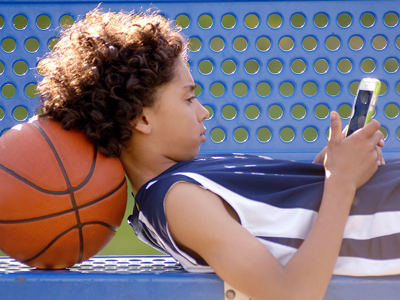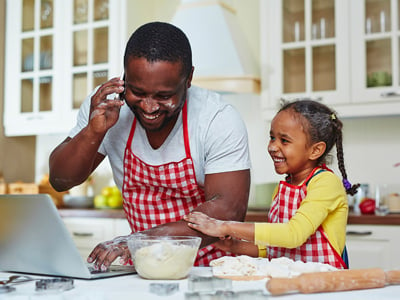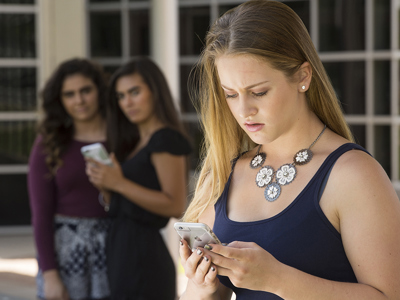- Doctors & Departments
-
Conditions & Advice
- Overview
- Conditions and Symptoms
- Symptom Checker
- Parent Resources
- The Connection Journey
- Calm A Crying Baby
- Sports Articles
- Dosage Tables
- Baby Guide
-
Your Visit
- Overview
- Prepare for Your Visit
- Your Overnight Stay
- Send a Cheer Card
- Family and Patient Resources
- Patient Cost Estimate
- Insurance and Financial Resources
- Online Bill Pay
- Medical Records
- Policies and Procedures
- We Ask Because We Care
Click to find the locations nearest youFind locations by region
See all locations -
Community
- Overview
- Addressing the Youth Mental Health Crisis
- Calendar of Events
- Child Health Advocacy
- Community Health
- Community Partners
- Corporate Relations
- Global Health
- Patient Advocacy
- Patient Stories
- Pediatric Affiliations
- Support Children’s Colorado
- Specialty Outreach Clinics
Your Support Matters
Upcoming Events
Mental Health Town Hall
Tuesday, April 23, 2024Join Children’s Hospital Colorado pediatric experts for a virtual...
-
Research & Innovation
- Overview
- Clinical Trials
- Q: Pediatric Health Advances
- Discoveries and Milestones
- Training and Internships
- Academic Affiliation
- Investigator Resources
- Funding Opportunities
- Center For Innovation
- Support Our Research
- Research Areas

It starts with a Q:
For the latest cutting-edge research, innovative collaborations and remarkable discoveries in child health, read stories from across all our areas of study in Q: Advances and Answers in Pediatric Health.


Social Media Safety: Kids and Teens Weigh In

The internet is a powerful tool for learning and engaging with the world — but just like any powerful tool, it can also be risky, especially for kids and teens still learning the ropes. And given that 95% of teens have access to a smartphone, keeping them safe is an urgent issue. So how can parents monitor their child’s online activities without intruding in their personal space? We talked to some teens — and some experts — to learn more about social media safety.
Navigating an online world: social media safety tips for parents
"I don't think a lot of parents understand how much value kids put on social media and how it can affect them," says Chloe, 16. "Sometimes parents just kind of push it off, like, 'That's stupid. Get over it.'"
Jace, 14, agrees. "As teenagers, we're already self-conscious, so that stuff makes it hard to talk about with your parents. Because it's like, 'Yeah, OK, it's dumb, but I care about it.'"
Both Jace and Chloe want to talk to their parents about social media. That might be surprising, given the eyerolls many parents might expect. But it's a big part of their lives, and they want their parents involved — to monitor and set limits, yes, but even more, to support and approve of their choices.
"I mean, they shouldn't be helicopter parents about it," Chloe says. "But more just like talking about it and helping us figure it out, so you don't get sucked too much into that world."
One good way to start, says Children’s Hospital Colorado adolescent medicine specialist Amy Sass, MD, is with curiosity about what your child is up to.
“It’s an opportunity to let your kid be the expert, because most likely they are,” she says. “Never used TikTok or Snapchat? Have your kid show you how it works.”
Same goes for other forms of media. What’s your teen watching, listening to, playing? Watch, play or listen to it with them. Ask them about it. Let them tell you about it in their own words.
And of course, set limits.
“Have a discussion about which apps are acceptable,” says Dr. Sass. “Realistically, parents and guardians should be able to follow or friend their kids and just randomly check their phone to see who they’re talking to and what they’re talking about. Texts, messages, that kind of thing.”
For parents gauging how involved they might be, consider developmental age, which may or may not be the same as actual age. How much supervision do they need with other activities?
Limiting social media use
Kids can get into trouble with social media when it becomes a replacement for real life. It's hard for teens to understand the bigger implications of their decisions. Even more important than setting limits is helping them understand those limits so they can learn from them.
On parents’ part, the more open and honest they can be about the risks associated with internet use, the more prepared their child will be to manage difficult situations on and offline. Dr. Sass notes that it goes a long way for parents to be able to admit their own issues with media use.
One social media safety tool she particularly likes is the American Academy of Pediatrics' Family Media Plan, which helps parents set limits not just for kids, but for everyone in the family. In general, though, it’s a great idea to limit social media at home by making some spaces technology-free — such as the dinner table or bedrooms.
Social media and self-image
"Keeping up your popularity is hard," says Jace. "I'm not saying I'm super popular, but I feel bad for girls who are. It's stressful when you have so many people counting on you to be beautiful all the time and be that person they want you to be."
"I started comparing myself to other people," agrees Shirley, 19, who struggled with her self-image as a younger teen. "I saw my friends starting to change the way they looked, and because I was surrounded by that, I felt like I had to, too. You start to overthink every little thing you do."
Recent studies have shown that Instagram does in fact have serious negative effects on self-image, especially for young girls. According to one study — conducted by Facebook, which owns Instagram, and leaked by Facebook whistleblower Frances Haugen — 13.5% of teen girls surveyed said Instagram worsened thoughts of suicide. Another 17% said it made their eating disorders worse.
One way parents can potentially combat the effects of social media and self-image is to foster an ongoing dialogue that teaches kids about empathy.
“It really needs to be an ongoing dialogue between parents and kids, engaging in these conversations around how they think about the images they see,” says Dr. Sass. “It’s so important for a young person to be able to identify that the person who posted that photo probably took 70 photos before they posted that one.”
Plus, there’s filtering, photoshopping and even airbrushing, all of which further distort reality.
“So much of it is just fake,” Dr. Sass continues, “and so much stuff is deliberately marketed to them. Have them step back and see how the people they follow and admire are posting about certain sneakers or makeup brands. They’re getting paid.”
Understanding social media “challenges”
Challenges are another aspect of social media that can affect your child’s self-image and safety. Social media challenges often start with a person daring their friends and followers to share a video of themselves completing a certain task. Children’s Colorado child and adolescent psychologist Kim Sheffield, PhD, says kids might participate in social media challenges to build their following and earn attention from others.
“There’s that desire to get feedback from their audience,” Dr. Sheffield says, “whether that be likes or comments or other engagements.”
She adds that kids may feel pressured to participate in challenges out of fear of being deemed “uncool” if they don’t join in. It’s also important to remember that adolescent brains are still developing (they’re not fully formed until age 26), so behaviors that may seem obviously risky to adults don’t always seem as dangerous to kids.
“The last piece of our brains to fully develop is our frontal lobe, which helps us with inhibition and regulating impulses and bigger picture thinking — all of those things that would help us with thinking through the consequences of our decisions,” Dr. Sheffield says.
Peer pressure, plus a lack of judgment skills, can lead kids to participate in some dangerous social media challenges. Some examples of this include the “Benadryl challenge,” in which kids are challenged to drink the antihistamine until they hallucinate, or the “blackout game,” in which kids choke a friend until they pass out.
To keep kids safe from such situations, parents should remain curious. Rather than labeling a challenge as bad, they might say, “I wonder how you feel after watching one of those videos,” suggests Dr. Sheffield. This gives kids time to reflect on their relationship with challenges and social media at large.
Parents can take a similar approach to potentially harmful trends, such as “what I eat in a day” videos, which can promote disordered eating and poor body image. For help keeping up with trends — which are constantly changing — Dr. Sheffield recommends keeping lines of communication open.
“Establish the expectation that you’re going to be checking in on how they interact with people online and on social media,” she says, “[so you’re] able to go through your kid’s TikTok and see the things that are coming up in their algorithm, which must mean that these are the types of things they're watching.”
Lastly, kids engaged in social events, sports and other activities won’t have as much time to dedicate to social media challenges. "Helping kids continue interests outside of social media is a big part of raising healthy, knowledgeable children,” Dr. Sheffield adds.
Social media and sleep: putting phones to bed
When kids (and adults) associate their beds with sleep and sleep only, research shows they get to sleep faster and sleep better. If possible, it’s best not to use bedrooms as hangout spaces and to keep screens and phones in other rooms.
One big reason social media and sleep don’t mix: light exposure. Part of the body’s process of going to sleep is producing a hormone called melatonin — and bright lights from screens suppress it. “Screens trick your brain into thinking it’s daytime, and if it’s daytime, your brain is not going to let you fall asleep,” says pediatric pulmonologist and sleep specialist Stephen Hawkins, MD.
Social media and cyberbullying
One unfortunate reality of social media is that it opens the door to cyberbullying, a form of bullying or harassment that takes place electronically. The best thing parents can do to help is to have a proactive plan. Prepare your child with the understanding that if someone online is making them uncomfortable, it is not OK. But the right response from you, as a parent, depends on the person doing the bullying.
“Start by doing a little parenting CSI,” says Dr. Sass.
Most often the cyberbully is someone that your child knows personally, typically through school. If that is the case, it is important that you work with other parents or with the school to decide on an appropriate intervention. Schools are taking social media and cyberbullying very seriously and normally welcome the involvement of parents.
It can be challenging if your child is being bullied online by someone that they don’t personally know, because it is not always easy to figure out who’s behind cyberbullying. In this situation it’s important that parents educate themselves about the policies and features of each website or platform. They often have rules in place to intervene when users engage in bullying behavior. In fact, Instagram, Snapchat, TikTok and Facebook all have safety guides for parents:
- Helping Your Teen Navigate Instagram Safely
- A Parent’s Guide to Snapchat
- TikTok Safety
- Facebook Parents Portal
Parents can also help kids block cyberbullies from contacting their child via social media by unfollowing or unfriending that person. In some instances, it could be appropriate to shut down the account.
The good news is, just talking about social media bullying can sometimes lessen kids’ pain by making them feel less isolated. Of course, most kids will also be reluctant to disclose these interactions, so check in often and ask them about it, particularly if they’re showing any signs of being bullied, such as withdrawal from school or social activities, sudden avoidance of certain situations or hypervigilance.
It’s important to talk to kids not just about how they expect to be treated on social media, but also how they treat others. A good rule of thumb is never to say something online that you wouldn’t say in person. Foster empathy and teach kids to be kind and courteous in whatever space they’re in. In fact, that’s a great rule for kids and adults: If you wouldn’t want your post on a billboard with your face on it, you probably shouldn’t post it anywhere online.
What about sexting?
Sexting, or sending sexually explicit messages or pictures via text messages or social media platforms, is all too common, and parents need to talk to kids about it, says Dr. Sass. In fact, she thinks it should be a part of every parent’s standard internet safety talk.
“We do better when we have clear expectations: Every time you ride a bike, wear a helmet. Every time you’re in a car, wear your seatbelt. Never send naked pictures to anyone,” she says. “Nobody who cares about you should ever ask for inappropriate pictures online. If you care about yourself, you should never share them. Doesn’t matter if it’s a romantic partner or a best friend. Once that stuff is out there, it’s out there forever.”
One of Dr. Sass’ top social media safety tips for parents is to pose a reverse scenario. For example, illustrating situations such as, “What would you think if I took naked pictures of myself and sent them to dad? What if I accidentally put in the wrong number and sent them to my boss? It’s really not OK for anyone.”
And if parents find out their teen has sexted, she says, they need to act immediately to find out who’s requesting the images, who they’ve been shared with and where. As with cyberbullying, the right course of action really depends on the situation, but under no circumstances should parents ignore it or hope it will go away.
It’s also critical that parents educate their kids about the dangers of establishing relationships with people that they meet online. Some kids do form genuine friendships through social media and gaming, but any real-life meeting that comes out of it should involve proper planning and supervision on the part of both kids’ parents or caregivers.
People on the internet aren’t always who they say they are. Parents should coach kids to never give out any personal info — including their last name, address or the name of their school — without checking with the parent first. Even photos they post may include a location tag on some platforms, unless it’s turned off in their settings. Kids — and parents — need to be vigilant.
The right age for social media
Because in many ways access to social media is a trade for privacy, it’s best for kids not to have independent access before adolescence. There’s too much potential for their privacy to be compromised and for them to have negative experiences.
It’s also difficult for kids and teens to understand the permanence of their online actions. On the internet, there really is no such thing as “gone.” Once something is posted or communicated online, it likely continues to exist somewhere, even when deleted from its original location.
In terms of cognitive development, teens, and even young adults, often have difficulty grasping the long-term consequences of their behavior. They also tend to act impulsively. The short-term gain of forwarding something that they might find funny in the moment can lead to serious long-term problems. In some circumstances, simply passing along harmful or threatening information electronically can make a user just as responsible as the person originally posting it. If there is something that your child wouldn’t say or do offline, they shouldn’t do it online. It can, and usually does, stay with them forever.
Social media warning signs
Child psychologists at Children’s Colorado often find it interesting to see what happens when teens come into treatment, which is a tech-free zone. At first, they’re concerned about how they’re going to handle it. But then they do fine. Whether they admit it or not, most of them appreciate the break — and many of them do admit it. They don't want to be left out, but at the same time, it's a lot to manage. Some of them have even asked their parents to restrict phone use just to have a reason to tell their friends why they’re offline.
There’s a lot of potential for kids and teens to develop an unhealthy relationship with technology. One of the first and most troubling warning signs is when kids disengage from more typical social interaction in favor of spending more time "with technology." Social media rarely creates the kind of connections that kids and teens are looking for, which can increase feelings of loneliness.
Parents should be aware of the kinds of material their children are accessing online. When a child is routinely accessing inappropriate or concerning materials online, that’s a problem in and of itself, but it can also translate to similar real-world activities and behaviors with serious consequences.



 720-777-0123
720-777-0123






